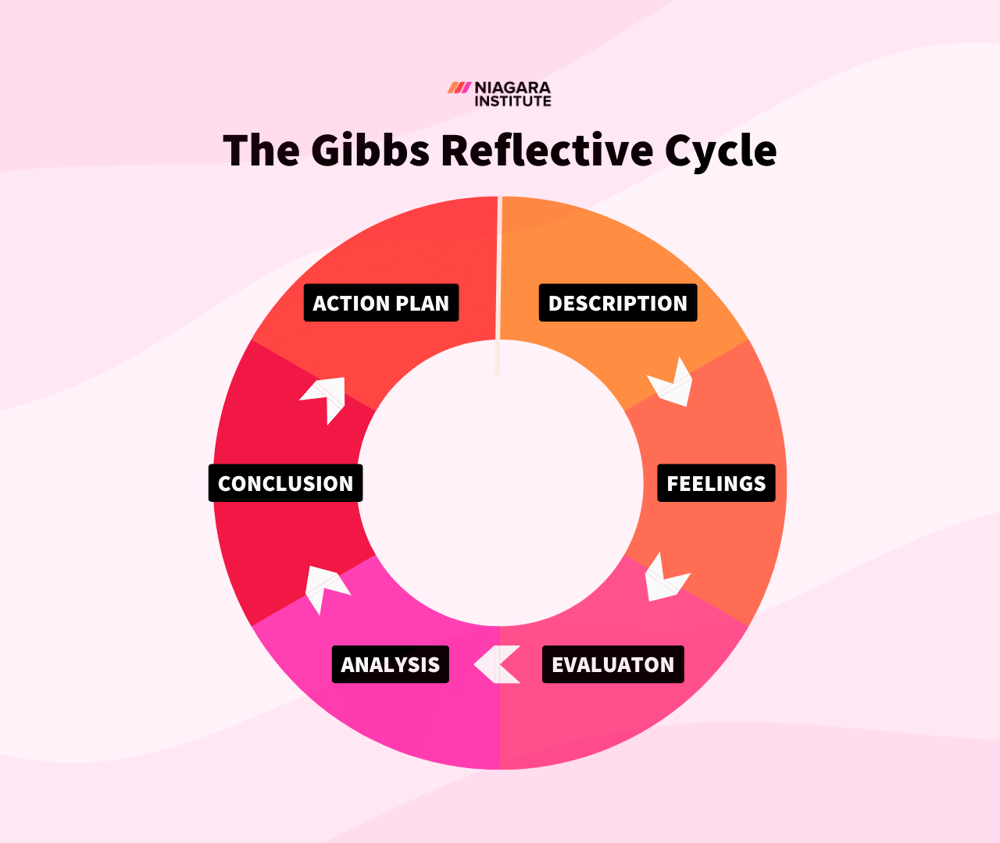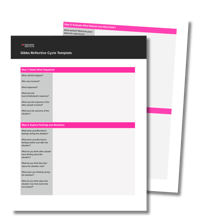9 min read
The Start-Stop-Continue Exercise: How To Conduct One (+Template)
In our search for improvement, we often find ourselves reflecting on what works, what does not, and what needs to change. This process of evaluation...
6 min read
 Michelle Bennett
:
Nov 23, 2023 5:00:00 AM
Michelle Bennett
:
Nov 23, 2023 5:00:00 AM

When was the last time you or your team stepped back and learned from an experience or situation at work? For many who are fighting to meet tight deadlines and deliver on pressing projects, taking time to learn from experience and reflect on situations falls by the wayside.
However, new research shows that is a mistake, as taking time to reflect on scenarios at work improves performance in the long run. Harvard Business School Professor Francesca Gino explains why: "When we stop, reflect, and think about learning, we feel a greater sense of self-efficacy. We're more motivated, and we perform better afterward."
To make reflection an intentional activity for your team, you’ll want to run a Gibbs Reflective Cycle exercise to help you make reflection an intentional activity. In this article, we’ll review the Gibbs Reflective Cycle, the corresponding model, and how to run the exercise, as well as provide you with a template you can use with your own team.
Jump to:
The Gibbs Reflective Cycle is a systematic process that individuals and teams can use to reflect upon and learn from their experiences at work. Originally put forth by Professor Graham Gibbs in his 1988 book, Learn by Doing, the Gibbs Reflective Cycle is a step-by-step approach to analyzing and understanding the complexities of workplace situations.
Gibbs' model is similar to the Start-Stop-Continue retrospective, which focuses on identifying actions to start, stop, or keep doing. The purpose of the Gibbs Reflective Cycle is to gain valuable insights and improve decision-making in the future.
The Gibbs Reflective Cycle centers on a model that consists of six stages, known as the Gibbs Model of Reflection. The model outlines the process by which individuals and teams follow to learn from different experiences at work. Here are the six stages and a brief description of each:

The Gibbs Reflective Cycle starts by objectively describing the situation or experience that is to be evaluated and reflected upon. In this stage, you will provide details regarding the context and individuals involved, as well as any relevant background information.
The second step in the Gibbs Reflective Cycle is to explore your emotions during the experience in question. Here, you will note the positive and negative feelings you had during the experience. Identifying and acknowledging emotions is critical to gaining a deeper understanding of the situation. This process, often referred to as emotional agility, helps you navigate your emotions effectively, allowing for more adaptive responses.
At this stage of the Gibbs Reflective Cycle, you break down the experience into two areas - what went well and what could have been improved. It is in this stage that you will assess the strengths and weaknesses of your approach, considering both your actions and the outcomes.
Now, it’s time to dig deeper into the situation to determine the root cause of the underlying factors contributing to the outcomes. Here is where you’ll begin to make sense of what happened by taking the details of what happened (steps one to three) and the meaning behind it.
Equipped with your analysis of the situation, you will want to summarize the key learnings from your reflection. Here, you will identify what you learned from this experience and the insights you will apply to similar situations in the future.
The last step of the Gibbs Reflective Cycle is to create an action plan based on your analysis and conclusions outlining the specific steps to be followed to improve performance or address any skill gaps. In this final reflection step, you will want to set measurable goals and define actionable strategies, such as a training plan, to help you implement the lesson learned and grow as an individual or team.
Below is an example of each stage of Gibbs' Reflective Cycle, using it to reflect on a project meeting that didn't go as planned.
We had a project meeting to finalize the timeline and assign tasks. But it went overtime, we didn't make key decisions, and everyone seemed frustrated and disengaged.
I felt anxious because we weren’t making decisions, and frustrated because the meeting agenda wasn't followed. I also noticed others seemed checked out.
Good: Some team members shared valuable insights, and we had a good initial discussion about project goals.
Bad: The meeting lacked structure, key decisions weren't made, and the atmosphere was tense and unproductive.
The meeting was unproductive because there was no clear agenda or time management. Team members were probably frustrated because they didn’t understand their roles or the meeting’s objectives. Poor communication and facilitation were major issues.
I could have prepared a detailed agenda and shared it with the team beforehand. Setting clear and realistic goals for the meeting and allocating time for each item might have kept us on track. Encouraging everyone to participate could have also helped.
For future meetings, I will:
Reflecting on this using Gibbs Reflective Cycle helps me see what went wrong and how to improve future meetings to make them more productive and engaging.
 Now that we understand the Gibbs Reflective Cycle let's go over how you can use this model to facilitate a team exercise to help your people learn from their experiences at work. This editable Gibbs Reflective Cycle Template will make doing so easier as it walks you through the necessary steps and gives you a place to record the information.
Now that we understand the Gibbs Reflective Cycle let's go over how you can use this model to facilitate a team exercise to help your people learn from their experiences at work. This editable Gibbs Reflective Cycle Template will make doing so easier as it walks you through the necessary steps and gives you a place to record the information.
You will likely already have an idea of the situation in which you want your team to learn from experience. Situations often include when something goes wrong, a mistake is made, negative feedback is received, there is a conflict, a timeline isn’t met, or a goal is not achieved. Once the situation is determined, ask your team a series of questions to help describe the situation in detail. Here is a list of example questions you might ask:
The next step is to explore the feelings and reactions related to the situation. The goal is to bring awareness to how certain feelings may have impacted the experience. Here is a list of example questions you might ask to encourage this level of reflection:
Once the situation has been clearly defined and feelings have been explored, it’s time to evaluate the situation by looking at the positives and negatives. While it may be hard, it is important that you and your team are objective and honest in your evaluation. Here are a few example questions you might ask during this step:
Next, you will want to identify the root cause of the situation or experience. You should draw upon theory or literature to help explain what happened. The Niagara Institute has a robust library of articles on teamwork, leadership, communication, and conflict management, to name a few. Here are a few questions to ask to help your team get to the bottom of the root cause:
Once that is complete, you and your team will need to come to a conclusion regarding what happened and what you have learned from it. Encourage your team to review the situation again by assessing the information you’ve gathered and tracked from the previous steps. To get them to do so, ask the following types of questions:
The final step is to create an action plan that will help ensure similar situations are avoided or handled more effectively in the future. You’ll want to address any skill gaps, process improvements, or behavioral changes that need to be made. Doing so will show your leaders and those you lead that you’re proactive in making changes to ensure the outcome of a similar situation in the future will be different. Here are a few questions you may ask at this point:

9 min read
In our search for improvement, we often find ourselves reflecting on what works, what does not, and what needs to change. This process of evaluation...

5 min read
Mistakes, challenges, and problems will always arise at work. However, what sets individuals, teams, departments, and organizations apart is how they...

6 min read
Weekly team meetings are a staple in the lives of many teams in the workplace. The purpose is to help ensure the team remains connected to each...